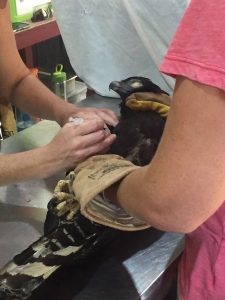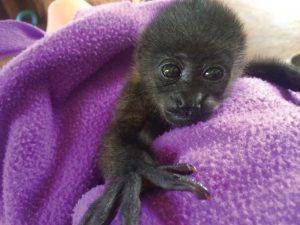KSTR Thanksgiving 2016
 Happy Thanksgiving to you all! Thanksgiving is a time when we all give thanks for what we have in our lives. We thank all of you who have helped us to continue saving the rainforest. We have much gratitude to you all!
Happy Thanksgiving to you all! Thanksgiving is a time when we all give thanks for what we have in our lives. We thank all of you who have helped us to continue saving the rainforest. We have much gratitude to you all!
Now a message from our spokeskid, Lexi.
 As the spokeskid for Kids Saving the Rainforest (KSTR), I’m writing articles focused on a different program each month, and this month will be focused on our sanctuary. At KSTR, we have a sanctuary for animals that are either in the process of being rehabilitated, or cannot be released into the wild. We do tours of the sanctuary, which is part of our act to raise awareness about how the wildlife is treated, plus to teach people not to have wildlife in captivity, and last but not least, to show people how they can help save the rainforest. The sanctuary cares for many animals, ranging from sloths, parrots, several types of monkeys, hawks and other birds, marmosets, kinkajous, and even a blind coati. My favorite animal in the sanctuary is a half-blind white hawk named Glacier, who was found wandering aimlessly. Even though she is fully capable of flying, she doesn’t have good depth perception so will live out her life with us. Unfortunately, not all our wildlife can be released, due to many different reasons.
As the spokeskid for Kids Saving the Rainforest (KSTR), I’m writing articles focused on a different program each month, and this month will be focused on our sanctuary. At KSTR, we have a sanctuary for animals that are either in the process of being rehabilitated, or cannot be released into the wild. We do tours of the sanctuary, which is part of our act to raise awareness about how the wildlife is treated, plus to teach people not to have wildlife in captivity, and last but not least, to show people how they can help save the rainforest. The sanctuary cares for many animals, ranging from sloths, parrots, several types of monkeys, hawks and other birds, marmosets, kinkajous, and even a blind coati. My favorite animal in the sanctuary is a half-blind white hawk named Glacier, who was found wandering aimlessly. Even though she is fully capable of flying, she doesn’t have good depth perception so will live out her life with us. Unfortunately, not all our wildlife can be released, due to many different reasons.
We get a lot of animals in due to electrocution. Because there are roads in the middle of their forest, animals seem to think that those conveniently placed telephone wires were made just for them. They end up crossing, and gaining severe injuries in the process. Fortunately, we have placed numerous ‘Monkey Bridges’ around Manuel Antonio, which has decreased the amount of animals that come in because of electrocution (stay tuned for a future article about our monkey bridges!).
Another reason we receive animals is because they were kept as pets. Unfortunately, unlike the animals that were electrocuted, we cannot release these animals as they are too used to humans and would not be able to fend for themselves.

One more reason that animals are brought in is because they were orphaned. Their mama was injured somehow and cannot care for the baby any longer, or a baby sloth may have fallen from a tree and the mama didn’t go get it. This is not very common, but it still happens. These animals can be released most of the time, because of the fact that they usually do not suffer from very severe injuries, and we isolate them from human contact as much as we can.
Those are not the only reasons animals are brought into the sanctuary, though. Some have lost their homes because of deforestation, some were harmed by another animal, some were run over by cars, and the list just goes on. Our vets, staff, and volunteers do the best they can to rehabilitate the animals, and if we’re lucky enough, we’ll be able to release them. Sometimes, animals stick around the sanctuary. I was there a few weeks ago, and we managed to spot some Titi monkeys that had been released and decided to come back to visit!
The sanctuary is an amazing way to spread the word that harming animals is bad! Simply interacting with wild animals is harmful as well…let wild animals stay wild. It’s hard to not sympathize with an animal that had been kept outside as a pet, or electrocuted, or hurt in some way by something we built or did. That’s why KSTR is here, to help these animals and to educate us about potentially hurting our wildlife forever.
If you are thankful about what KSTR is doing to save the rainforest, please make a donation at www.kstr.org to show your appreciation and help us to save the rainforest! Thank you!

